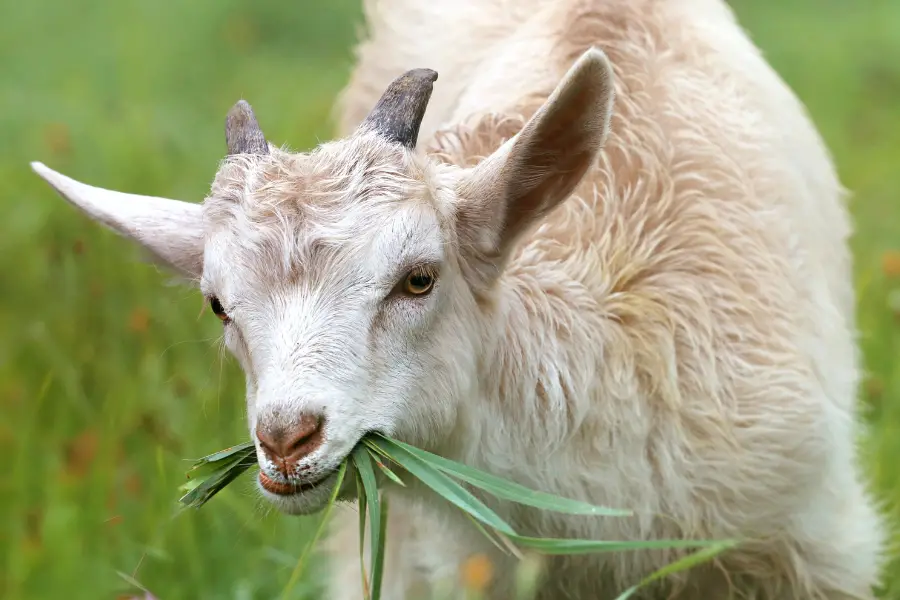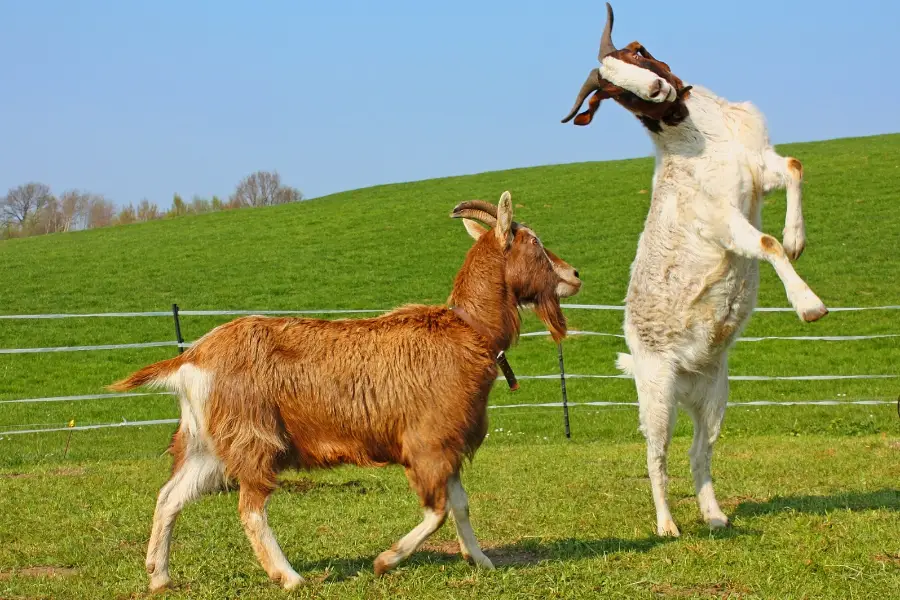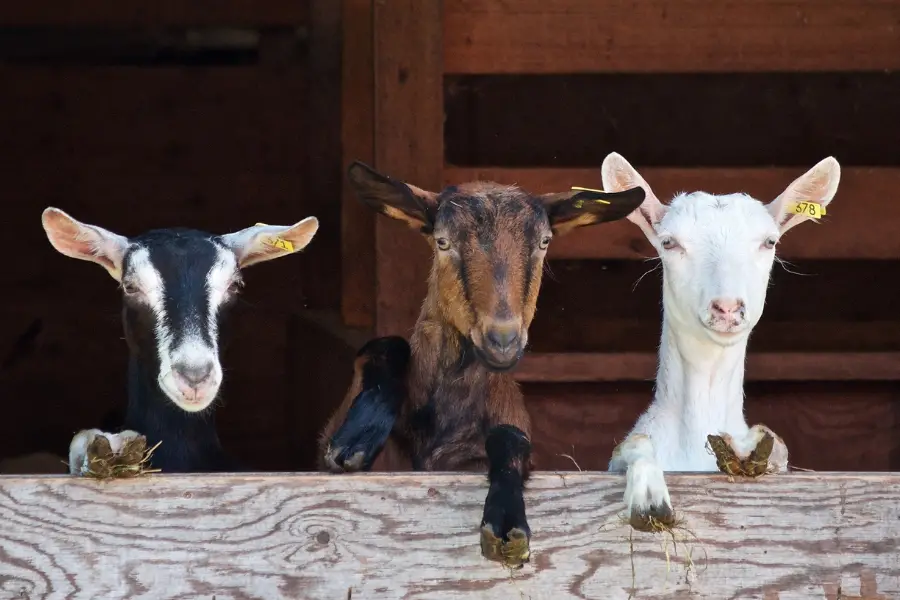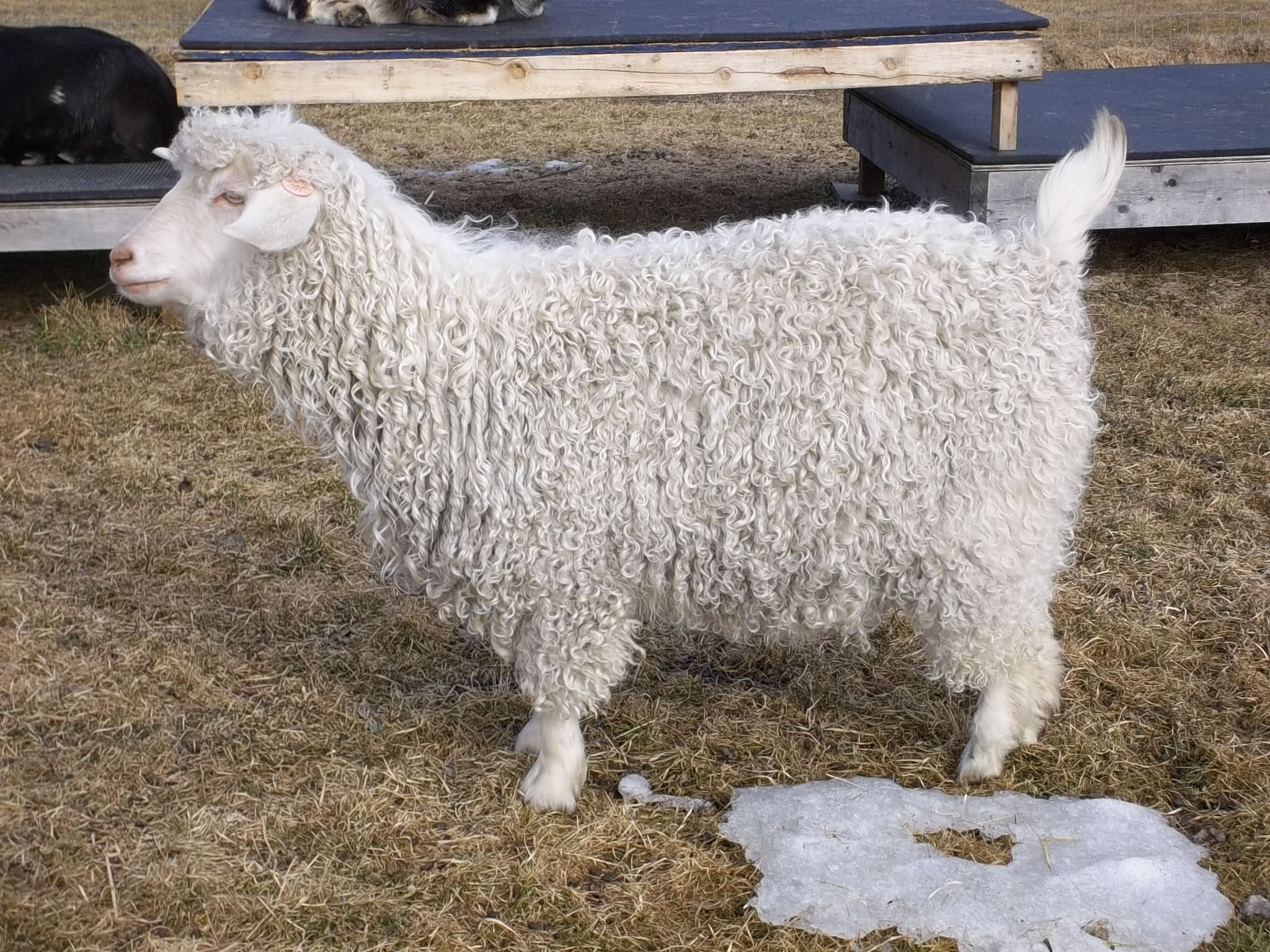
Pygora goats are a beautiful, distinct breed of goat.
Table of contents
- What is a Pygora Goat?
- Pygora Goat Characteristics (Size, Temperament, Diet & More)
- Pygora Goat Fiber – What Types Does It Produce & How Much?
- Pygora Goat Origin – Where Do Pygora Goats Come From?
- Pygora Goat Price – How Much Does a Pygora Goat Cost in the USA?
- Pygora vs Angora Goats – What’s the Difference?
- Pygora Goat Milk – Can You Milk a Pygora Goat?
- Raising Pygora Goats for Profit – Tips for Farmers
- Where to Buy Pygora Goats in the USA?
What is a Pygora Goat?
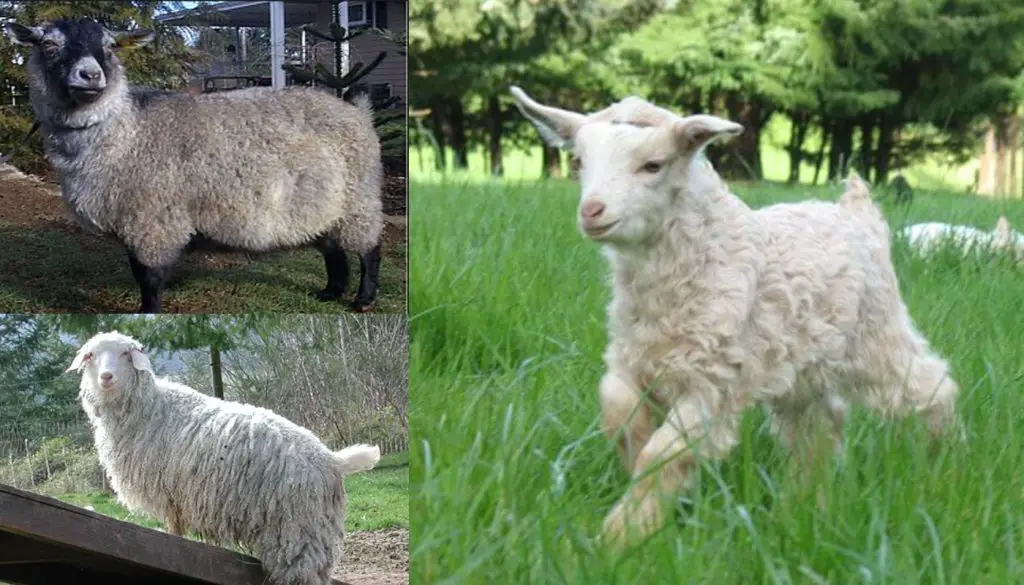
Pygora goat is a fiber goat breed that originated from breeding a pygmy buck, a goat with short soft down and a female Angora doe which has a long silky fleece. They were originally bred in Oregon City in the 1980s by Katharine Jorgensen. A Pygora goat produces a lofty, soft fiber that does not get coarse as the goat ages.
The Pygora Breeders Association (PBA) was formed in 1987 to keep records and promote this breed of goat. A goat can be named a Pygora goat only if it reaches the PBA standards which include fleece characteristics, color and conformation.
Pygora Goat Characteristics (Size, Temperament, Diet & More)
- Size: Male Pygoras have an average weight of 75 to 140lb and must be at least 23 inches tall. Female does have an average weight of 80 to 120lb and must be at least 18 inches tall.
- The lifespan of a Pygora is between 12 to 15 years.
- Temperament: Pygoras are alert, friendly curious and easy to handle. They are docile because of their Angora ancestor.
- Pygora goats produce three types of fleece. Type ‘A’ which is Angora Mohair, Type ‘B’ which is Cashgora and Type ‘C’ which is Cashmere fiber.
- As much as Pygora goats are raised for fiber, they can also be raised for milk and be used as pets.
- Kidding: Pygora does give birth to one to four kids per kidding. The most common is twins per kidding.
- Diet: All goats are grazers so it is advisable if you can produce pasture for the goats. They get all the required nutritional needs from the pasture. You may supplement the feed with high quality hay like alfalfa and a small amount of a properly balanced grain. You may feed a half a cup a day per goat every day. Always feed them in clean feeders so that food cannot be contaminated with dirt. Provide clean and fresh water all day long.
|
PYGORA GOAT PROFILE | |
|---|---|
|
Breed Name |
Pygora |
|
Breed purpose |
Fiber |
|
Breed Size |
Miniature |
|
Buck weight |
34 to 43 kg |
|
Doe weight |
29 to 34 kg |
|
Climate tolerance |
All |
|
Horns |
Usually hornless |
|
Coat color |
Many colors |
|
Country of Origin |
United States |
Pygora Goat Fiber – What Types Does It Produce & How Much?
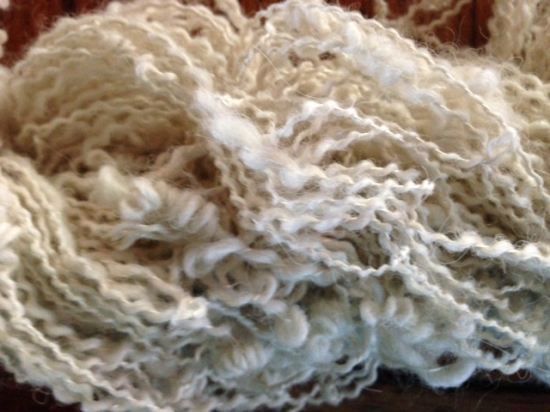
Pygora goats produce three types of fiber:
- Type “A” (Angora Type) – the fiber is fine mohair which is up to 6 inches long. Fibers are typically less than 28 microns in diameter.
- Type “B” (Blend Type)- this is the blend of the pygmy cashmere and Angora mohair which is three to six inches long and has a diameter less 24 microns.
- Type “C” (Cashmere Type)- fine fiber that is one to three inches long. The fiber is less than 18 microns.
Type ‘A’ and Type ‘B’ are harvested by shearing while Type ‘C’ is harvested by brushing.
The amount of fleece produced depends on the Type of fleece. Type ‘C’ produces the least while Type ‘A’ produces the largest amount of fleece.
Type A may produce 3lb of fleece per shearing, Type B produces 1 lb of fleece per shearing and Type C produces as little as 8 oz per shearing per goat. The raw fleece includes desirable fiber and guard hairs.
Pygora Goat Origin – Where Do Pygora Goats Come From?
The Pygora goat is a small breed of domestic goat that originated in the United States in the 1980s. It was developed through a deliberate crossbreeding program involving two established breeds, the Pygmy goat and the Angora goat. The Pygora breed was specifically created to produce a fleece with desirable qualities for hand-spinning and fiber arts.
Here’s a detailed breakdown of the origins of Pygora goats:
- Pygmy Goats (25%): The Pygmy goat, originally from West Africa, was introduced to the United States in the mid-20th century. It is a small breed known for its compact size, gentle temperament, and excellent meat production. Pygmy goats have a short, dense, and coarse coat, which is not suitable for high-quality fiber production.
- Angora Goats (75%): The Angora goat, originating from Ankara, Turkey, is renowned for its long, silky, and luxurious mohair fleece. It was brought to the United States in the mid-19th century. Angora goats have a larger size compared to Pygmies and are primarily raised for their fiber. The mohair produced by Angora goats is highly valued in the textile industry.
- Crossbreeding Program: In the 1980s, a breeder named Katherine Jorgensen embarked on a crossbreeding program with the intention of developing a goat breed that combined the desirable characteristics of both Pygmy and Angora goats. The goal was to create a small-sized goat with a soft and lustrous fleece suitable for hand spinning.
- Selection and Hybridization: Jorgensen selectively bred Pygmy goats and Angora goats, aiming to incorporate the desirable fleece traits of the Angora breed into the Pygmy breed while maintaining the smaller size and gentle temperament of the Pygmy goat. The breeding program involved successive generations of crossing Pygmy and Angora goats and then selectively breeding the offspring with desired fleece traits.
- Naming the Breed: After years of dedicated breeding, the resulting breed was named the “Pygora” by Jorgensen, derived from “Py” (from Pygmy) and “gora” (from Angora). The Pygora goat was recognized as a distinct breed in 1987 by the Pygora Breeders Association, which Jorgensen founded to promote the breed and establish breeding standards.
- Fiber Characteristics: Pygora goats exhibit a range of fleece types, which are classified into three categories: “Type A” (mohair-like), “Type B” (cashmere-like), and “Type C” (a blend of both). The fleece is known for its softness, luster, and variety of natural colors. Pygora goats produce a fine, dense, and highly crimped fleece, making it desirable for hand spinning, knitting, and other fiber arts.
- Recognition and Popularity: Over the years, the Pygora goat breed gained recognition and popularity among fiber enthusiasts, hand spinners, and small-scale farmers. The Pygora Breeders Association continues to maintain breed standards, register goats, and promote the breed through educational events and fiber festivals.
Pygora Goat Price – How Much Does a Pygora Goat Cost in the USA?
The cost of Pygora goats is about 300USD. The price ranges with the size of the breed. Young goats are cheaper than adult goats.
The price also varies with the production capabilities of the goat. A goat with high yields will cost more than a goat with low yields.
The price also depends on papers, requirements and credentials.
Pygora vs Angora Goats – What’s the Difference?

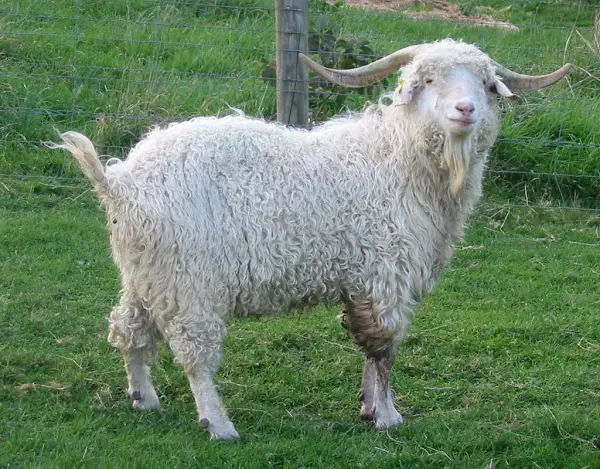
Below we will look at the differences between the two breeds of goats. Pygora goats have Angora lineage and pygmy lineage. Some of the differences are stated below:
|
CHARACTERISTICS |
PYGORA |
ANGORA |
|---|---|---|
|
Breed Size |
Miniature |
Medium |
|
Breed weight |
Mature goats weight between 63 and 95 pounds. |
Mature goats weigh between 80-250 pounds. |
|
Amount of fiber produced |
4 to 8 pounds of hair annually |
8 to 16 pounds of mohair |
|
Temperament |
Alert, friendly curious |
Docile and alert |
|
Fiber quality |
Doesn’t coarse as the goat ages |
Quality decreases as the goat gets older |
|
Lifespan |
12 to 14 years |
14 years |
|
Horns |
Usually hornless |
Horns measure approximately two feet. |
|
Height |
Average of 23 inches |
Average of 48 inches |
|
Type of fiber |
Type ‘A’ (mohair) Type ‘B’ (cashgora) Type ‘C’ (cashmere) |
Mohair |
Pygora Goat Milk – Can You Milk a Pygora Goat?
As much as the Pygora goat is used for fiber production it can also be used as a dairy producing animal. It will be able to produce at least a litre of milk per day. It will supply your family with some milk saving you money and time to go to the grocery store at the same time.
Raising Pygora Goats for Profit – Tips for Farmers
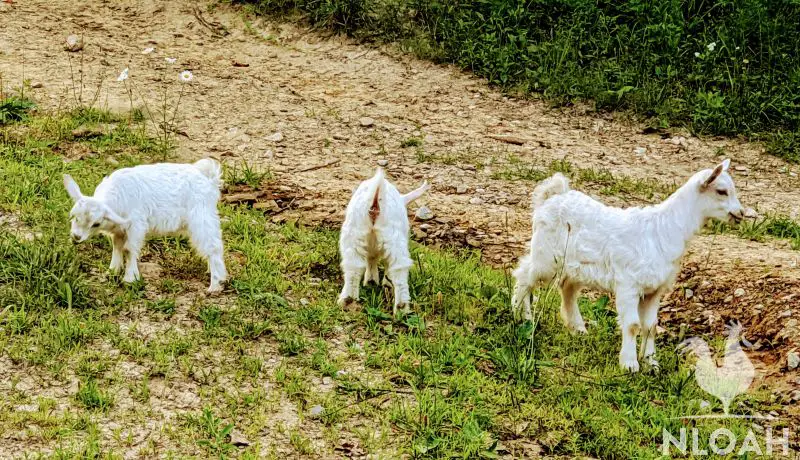
- Check with local authorities. Check the zoning regions to ensure Pygora goats can be kept within the town limits. Get the required permits for you to be able to raise the goats.
- Shelter and Fencing: Pygora goats require at least 135 square feet per goat. Have fencing that is five feet high as goats are good jumpers. The barns should always be dry and clean. Dirty and wet living condition may cause health related problems. Have enough ventilation in their shelters and design the barns to areas that provide part sun and part shade.
- Food and Water: The best practice is to provide your Pygoras with pasture. Pastures provide the enough nutrients that the goats need. Supplement their diet with high quality hay greens and grains. Goats also need plenty of fresh clean water on a daily basis.
- Purchasing the Pygora herd: Purchase a goat that meets all your requirements.
- Breeding: Pygoras are naturally good breeders. One mature and healthy buck can breed up to 30 does. If you are in the commercial business, then it is advisable to use artificial breeding.
- Vaccination: Talk to your veterinarian in order to guide you through the vaccination program of these fiber producing goats. Worming and lice control is also important in fiber goat farming. Parasites affect the fiber quality so it is best if they are controlled.
- Shearing: Pygora goats are sheared twice in a year. So it is important for you to purchase some wool shears and also learn how these goats are sheared.
- Marketing your produce: You can sell your produce at local stores or manufacturing companies. Look for market before starting this business.
Where to Buy Pygora Goats in the USA?
Goat farms: You may as well visit a goat ranch in your area and check whether the farmers might be selling any goats. You will also be able to learn a lot when buying a goat from a farm.
Newspapers: Producers often advertise goats that are on sale on newspapers. So you might check with your local daily and see the goats that are on sale.
Registries and goat clubs: You can buy Pygora goats from The Pygora Breeders Association. Producers who are part of the association may advertise their goats and people might find the goat that meets their requirements.
References:


